A New Old Idea
I finally decided to sit down and collect my thoughts about permacomputing, and the main thing I discovered was that I need to do more thinking.
Contents
The seed is planted
I’ve been thinking about permacomputing since I first read Steve Lord’s excellent piece about “heirloom computing” quite some time ago. In all honesty, it’s something I’ve been thinking about since I was in high school in one way or another, when I would print out old Altair and Fairchild F8 manuals (because I thought I might try to write a Channel F game, of course) and read them obsessively.
Ever since I first saw a picture of the Information Appliance Swyft, which eventually became the Canon Cat, I’ve had in my head that something like that is what I should be using instead of the laptops and desktops and software stacks I’ve been using all along. My formative computing memories are watching my mainframe-programmer grandfather show me how he wrote BASIC programs on his Packard Bell PC with an amber monochrome monitor, playing Oregon Trail and Number Munchers on Apple //e computers (with color monitors!) in my elementary school’s computer lab, using ClarisWorks to create “books” and newspapers and write.
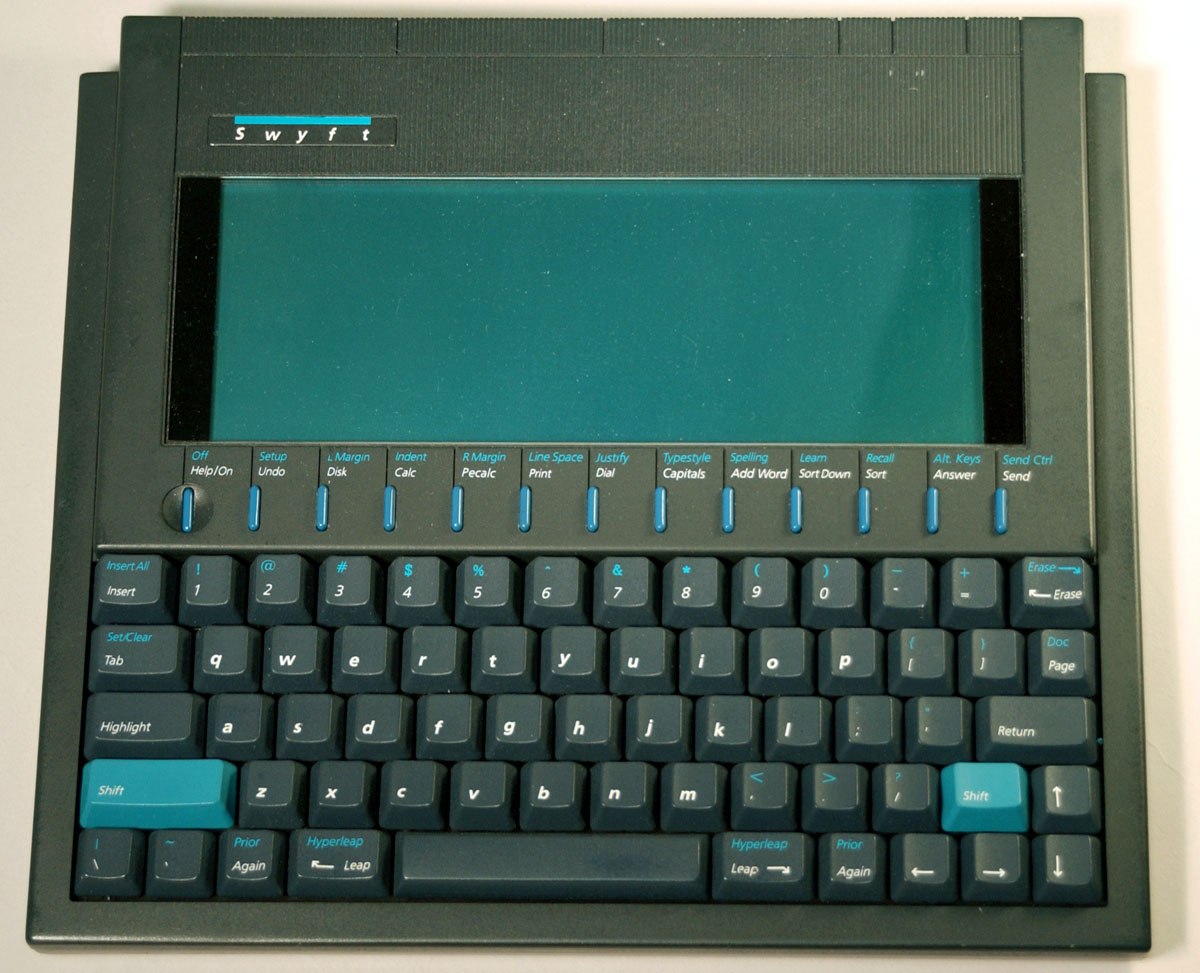
Image from Digibarn.
I took a class in third grade where they taught us how to use Yahooligans! to find things on the Internet, and I played with HyperCard whenever I could. Once we had the internet at home, I used it to learn about computers that had already passed into obsolescence—Intellivisions and Ataris, Altos and Novas, Crays and Thinking Machines. By eighth or ninth grade I was collecting old computers however I could get my hands on them, especially 680x0-based Macs. I fell in love with the carrying handles on the old compact Macs, and with what they implied about what a computer was supposed to be used for.
Some of what captured my attention about all these old machines was nostalgia, for sure. But more than that, it was a sense that there had been a fork somewhere. What drew me to old computers, and what still draws me to them after all these years, is the sense that people who used them new had a different faith in them: of computers as a tool for thought, as something that people could use to accomplish something new. The idea of computers as “the bicycle for the mind” felt like a lost future, the same way ring-shaped space stations and supersonic airliners were promised and lost.
From there—the feeling of a limitless future, of the promise of the computer as a thing to make people more themselves and to somehow enable their users to live a fuller life, led me to computer history books like Dealers of Lightning and The Soul of a New Machine, to people like Alan Kay, J.C.R. Licklider, Ted Nelson, to the Memex and the NLS and to Smalltalk, to Lisp and Scheme and Emacs.
But I never forgot the way I felt clicking through pictures of the Swyft and reading about how its users could drop down into its Forth environment or even to 68k assembly language programming at will.
The Dream
I was down a rabbithole reading about CP/M-86 (long story) when I came up for air and posted this on Mastodon (yes, with a content warning, which marks the image as “sensitive content” even though it’s a photo of a computer, because Mastodon is Mastodon):
And the idea has been hanging around in my head ever since. We’ve established that writing is hard no matter what tools you use, and I’m under no illusions that were this mystical device to materialize in front of me that it would remove any of the fundamental barriers to working that we all deal with every day. Thinking and creating are hard, and they generally require effort. But. Wouldn’t it be nice if we could all pursue these things using a tool perfectly suited for that pursuit?
Part of what I want is the solidity of an object. Before I started typing with the Colemak layout, I used an old Olivetti Studio 44 typewriter for drafting a lot of fiction1. It made my wrists hurt, but typewriters feel durable in a way that computers, especially any made in the last 20 years, simply can’t. The intricacy of design and manufacture here isn’t what I’m after, it’s the feeling you get from using an old hammer, or of starting an old truck: the feeling that this tool has been used for a long time and is nowhere near the end of its usefulness. The problem, setting aside for the moment whether this is a real problem or merely one of perception, is that as computers age, our sense is that they actually do reach the end of their usefulness, well before they actually stop doing the things they could do when they were brand new.
What I want is a computer that functions in the same way as a typewriter. What I mean is not that it’s an expensive Alphasmart with an e-Ink screen and an Ernest Hemingway endorsement to sell to Nanowrimo enthusiasts with too much disposable income. What I mean is that it doesn’t very many things, but what it does do is help me write, organize my thoughts, create things, correspond with people, and it will do those things for a very long time.
The hardware
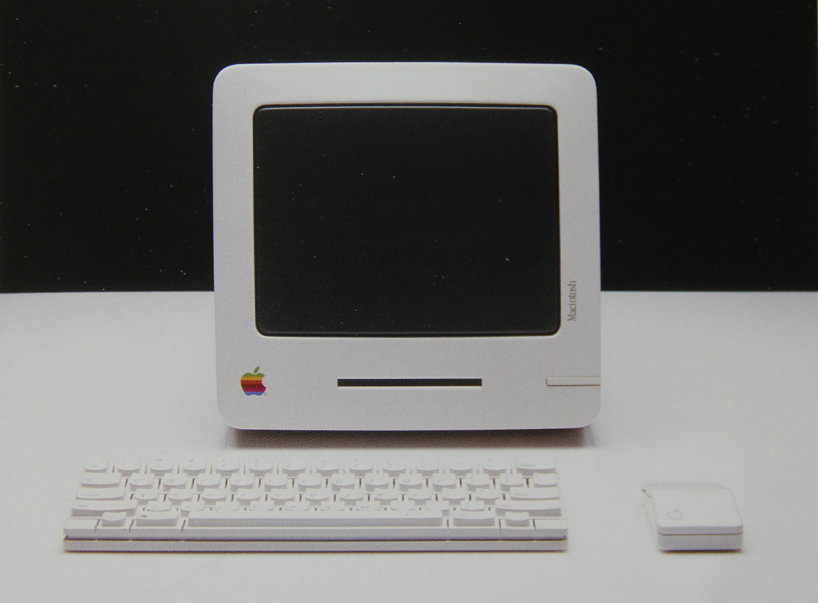
There are a few things I think this “dream computer” needs:
- An e-ink display of a decent size, maybe 12 inches or so.
- A good mechanical ergonomic keyboard. The keyboard probably needs to be removable so that the display and they keyboard can be set up in the most ergonomic position possible.
- The ability to run from batteries for a long time, but not a requirement to have batteries, as they age before the computer itself.
- Enough processing power to do everything it needs to do, but no more.
- Plenty of solid state storage, with the ability to add more.
- Ports! It’s got to be able to connect to whatever I might desire, using interfaces that will be around a long time–USB, Ethernet, maybe HDMI.
This looks nothing like “Canon Cat with an e-ink display” as described above, but that’s OK: the functionality is more important. There’s a way to build all of this with an acceptably “retro” aesthetic, and not because I want it to look old but because I like the design languages in vogue then–Memphis, Apple’s Snow White language, whatever the heck was happening over in the MSX world.
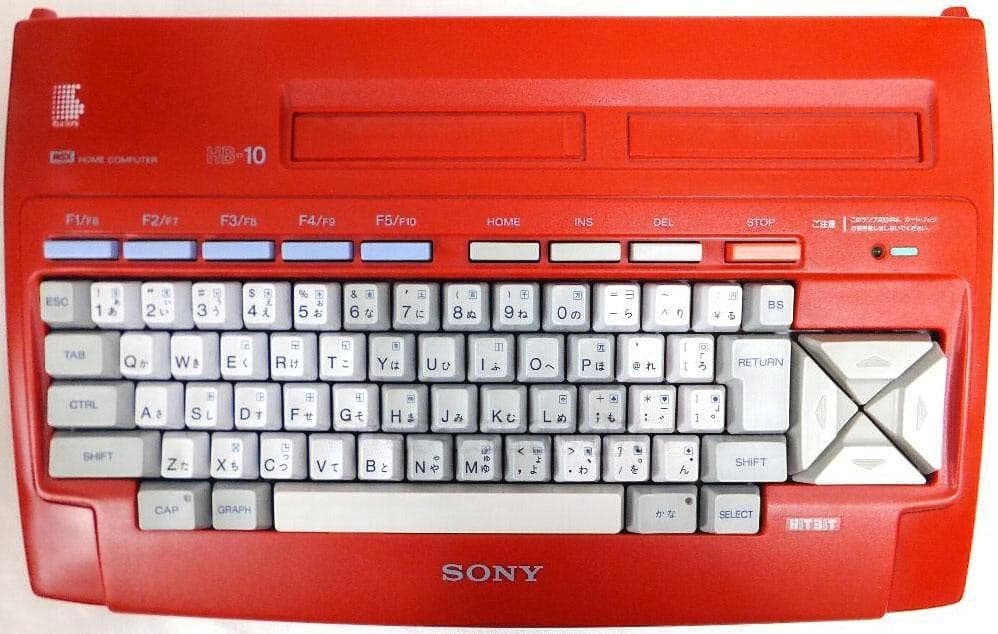
Photo from MSX.org wiki.
From a hardware perspective, it doesn’t seem to matter much what the guts are. Something like the MNT Reform is probably the ideal role model here: the system should be designed such that it can have any processor you choose, and there are a few available, all open-source in one way or another. Some sort of totally open-source RISC-V core seems like the optimal choice, but the key factor here is choice. If you want to plug in some other microcontroller and use a different OS, have at it.
Sidebar: Why the Cat?
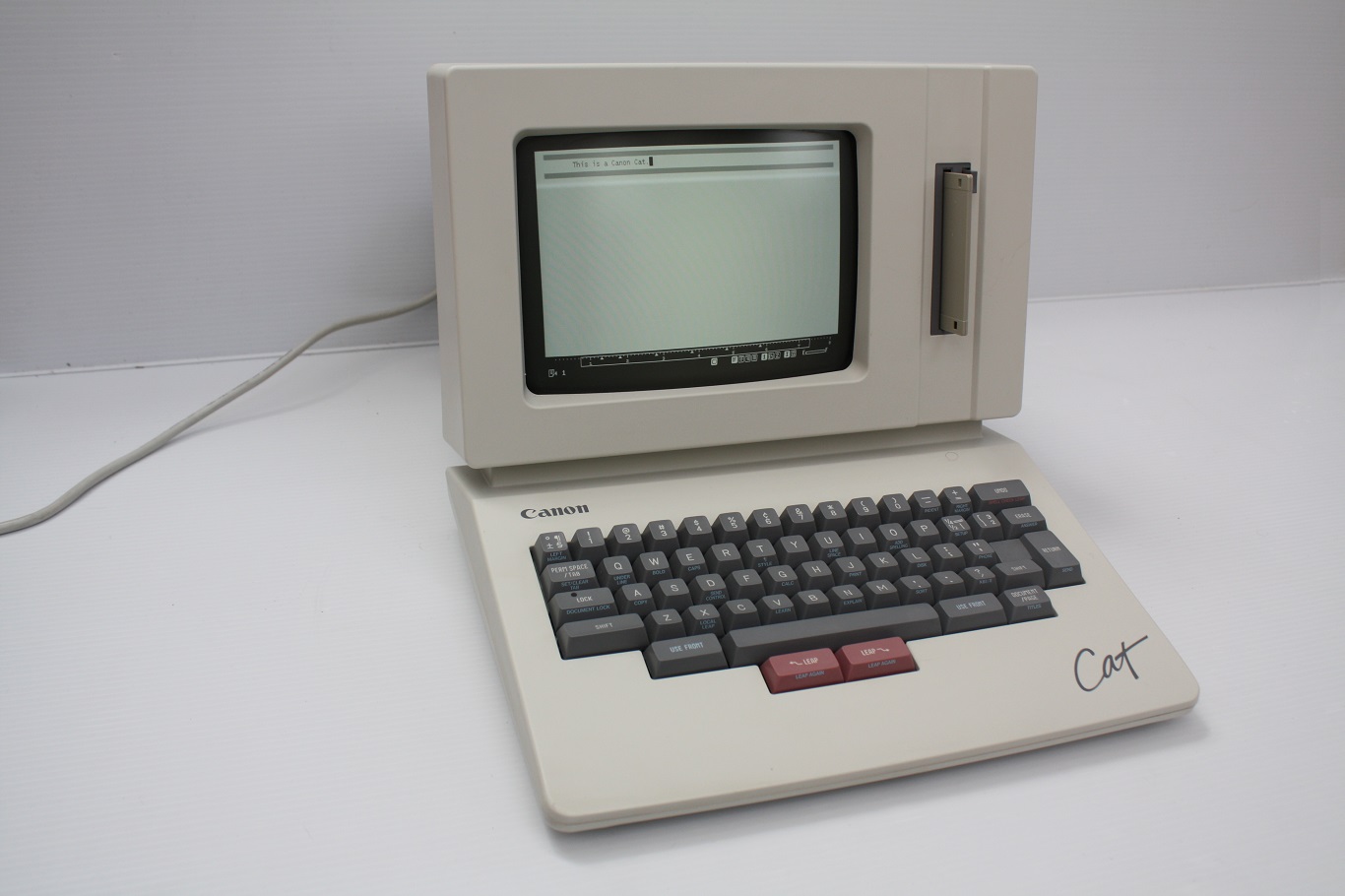
I think the reason the Canon Cat (similar to the original Macintosh form factor) has always stuck with me is that it looks inviting. Jef Raskin may not have been able to see the Macintosh through to completion, but both of these systems bear the stamp of his conception of “humane computing,” a concept that resonates with me more the longer I sit with it.
The hardware is rounded, non-threatening, inviting. There aren’t a ton of extra function keys. You can tell that only some of the keys are colored, so they must be that way for a reason.
Similarly, the software does the same thing: it masks the complexity of the machine but it doesn’t hide it. The full capability of the machine is available through its Forth environment and through an assembler, but you don’t have to think about it if you don’t want to. It’s the same thing I love so much about Emacs: it does what you want it to, and you don’t have to write a line of Emacs Lisp. But if you want to, you can make Emacs do literally anything.
Any system designed to serve in this “permacomputer” role must have the same ability: the keys to the kingdom must be available at all times, whether or not the user chooses to unlock the gates.
The software
The dumb answer to “what software runs on it” is “Org mode”, but that’s also the smart answer. The software environment is every bit as important as the hardware, because the software environment sets the tone for the interaction. There are countless directions such a computer could go, but the Emacs text-based interface is already there. At first, anyway, a shell, Emacs, and some sort of SLIME/Common Lisp programming environment will be enough for a power user.
That’s a short-sighted view, though. What we’re really after with such a “permacomputer” is something more like Alan Kay’s Dynabook, a computer for children of all ages. To quote from that paper:
What then is a personal computer? One would hope that it would be both a medium for containing and expressing arbitrary symbolic notions, and also a collection of useful tools for manipulating these structures, with ways to add new tools to the repertoire.
This is mostly a description of software: how the computer is used. And certainly, the many iterations of the Smalltalk environment represented the work of Kay and others to bring about this medium for thought and communication. Should we all be using Smalltalk on our permacomputers? Maybe. Lisp seems like another environment in this vein: simple to implement (at a basic level, anyway) and immensely powerful. Maybe Racket is the answer. This is the part that still requires a great deal of experimentation.
Maybe, even, the answer is to go small: something like an ESP32 or some other “smol” microcontroller that can be programmed at the bare-metal level in Micropython or some other embedded environment, but powerful enough for “real” tasks. But this would seem to be a waste of effort when there are computers available for $35 that are more powerful than the PowerBook G4 I took to college. Small systems have their place, but an ideal permacomputer is comprehensible without being artificially limited. The line between those two things can probably only be found through experimentation.
What's next
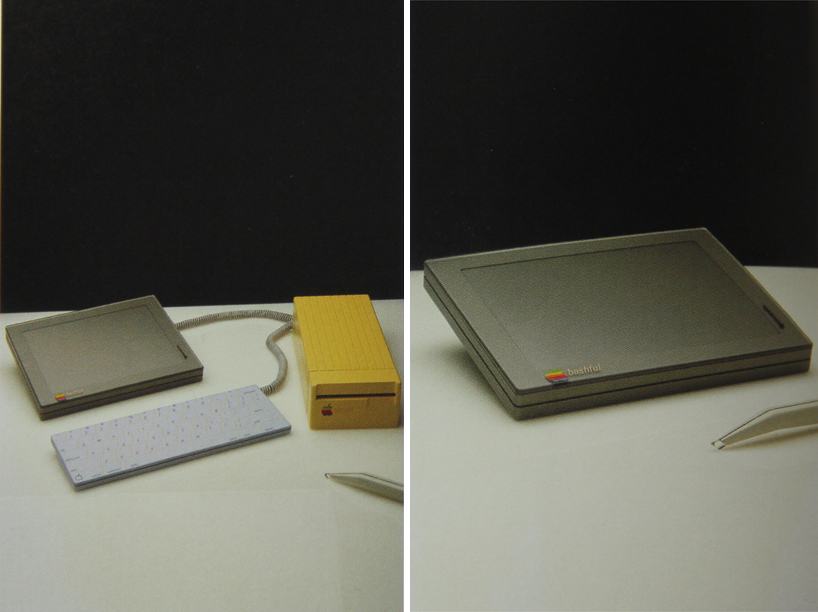
So what am I going to do?
What I’d like to do is manufacture a billion dollars out of the air (like SBF but without the impending jail time) and start a company to manufacture exactly this dream computer, something like the OLPC project but only for me. One Laptop Per Kevin.
What I’m going to do, instead, is start writing and start experimenting. I was going to call this effort the Paperbark Project, after a cool-looking maple tree. Google taught me that this is actually the name of some mining project in Queensland, so I’m probably going to come up with some other name for it. I love the idea of computers as little samara seeds, floating down from maples on the wind and landing where they may. Computers are like that, or they should be, carried on winds of thought.
I don’t have a 3D printer, so what that means at first is writing and tinkering. My next step is to set up a “Digital Garden” to grow a body of work around these ideas as I continue to develop them, and to start playing with software environments that might support such a system.
The writing is the starting point for me, though as always. Writing is how I discover what I think, and editing is how I clarify my thoughts to myself. My hope is that as I go, this (whether I do it here at System Stack or whether I set up some other site to host all of this writing) will serve as my “Book of Macintosh,” a roadmap for my conception of permacomputing and what it might look like.
I don’t know where this is leading. Maybe just to a bunch of cranky diatribes about how computers should be something other than what they are. Or maybe we’ll all stumble on something together. But I’m going to keep scratching the itch until the thing that I want is a little closer to being in the world.
-
I paid $50 for that typewriter and felt like it was a lot. They’re selling for somewhere around $300 on Etsy right now for some reason, but I’ll never get rid of my Olivetti. It’s my favorite typewriter font, and I’ve never seen a digital recreation that I thought was good enough. ↩︎
Published December 24, 2022 12:00